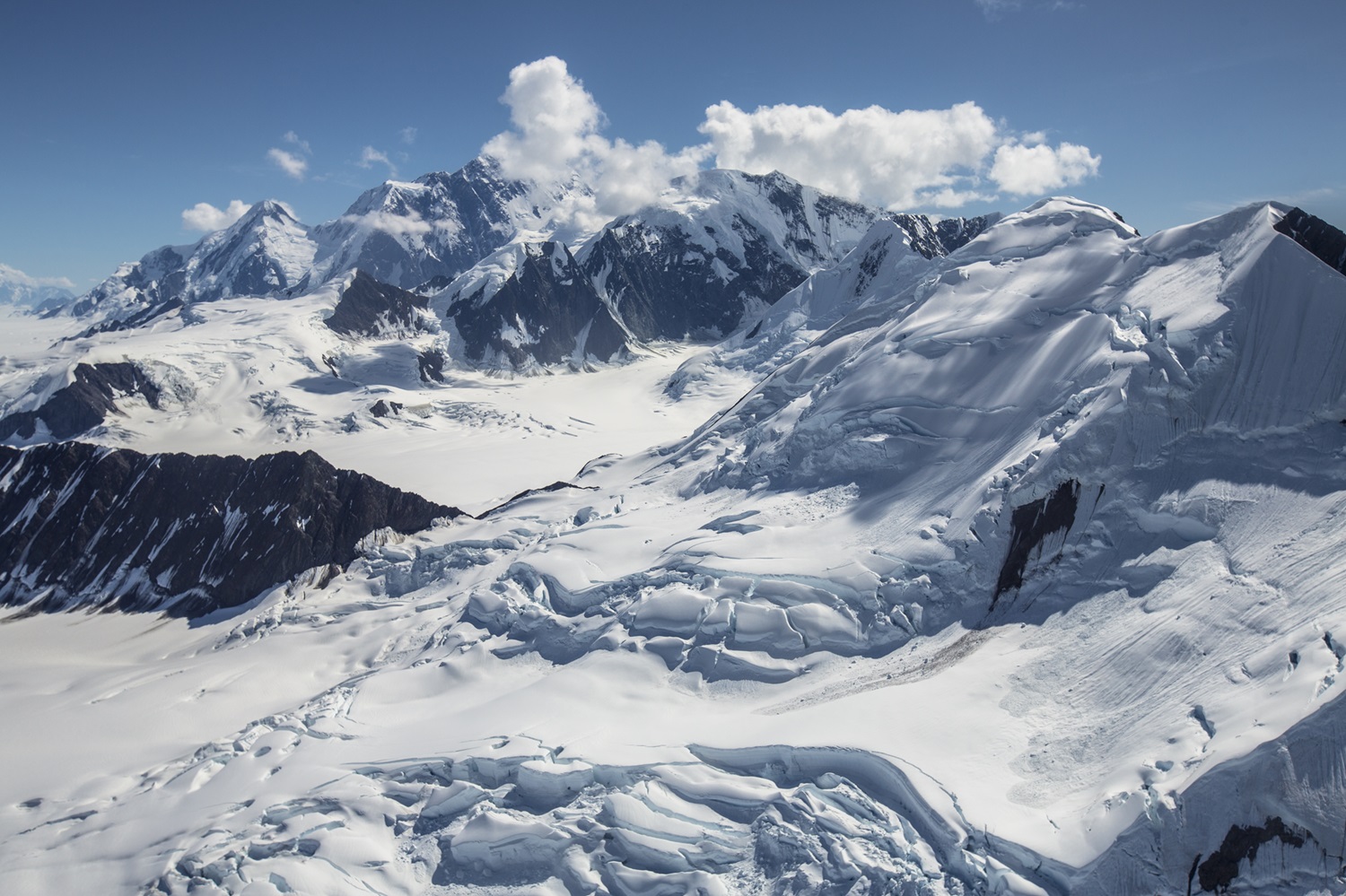Mount St. Elias, with an elevation of 5,489 m, is the second-highest mountain in Canada and is a boundary peak between Alaska and the Yukon. Mount St. Elias is located in the St. Elias Range, 43 km southwest of Mount Logan, Canada’s highest mountain. The mountain’s Tlingit name is Was’eitushaa, which means “mountain at the head of Icy Bay” or “mountain inland of Was’ei.”

Description
Mount St. Elias straddles the border between the United States and Canada and is the second tallest peak of both countries. It is also the fourth tallest mountain in North America. This mountain is a part of the Kluane National Park and Reserve and the American Wrangall-St Elias National Park and Reserve.
The sharp, snow-peaked mountain was created primarily through tectonic and volcanic activity. Since then, glacial erosion has further shaped it, and it is currently adjacent to the Columbus Glacier (see Glaciers in Canada).
History
Mount St. Elias has a long and enduring history of cultural and spiritual significance to many Indigenous peoples of the region.
The current name of Mount St. Elias came from 1747, when Vitus Bering’s expedition sighted a point of land on July 20th, the Saint’s Day of St. Elias. In May 1778, James Cook measured the mountain as having an elevation of 5,517 m, which is astonishingly close to the number officially accepted today. The first successful ascent was made by a large Italian party led by the Duke of Abruzzi in July 1897.

Present Day
Today, the area around Mount St. Elias contains numerous hiking trails of multiple difficulty levels. Ascending the mountain itself is an extremely challenging task requiring lots of experience and professional gear. Various communities exist relatively close to the mountain, including Haines Junction.
The mountain continues to be culturally and spiritually important to the Indigenous peoples of the area, such as the Tlingit.
Mount St. Elias and the surrounding region are being significantly impacted by climate change as the glaciers in the area melt, drastically changing the landscape.


 Share on Facebook
Share on Facebook Share on X
Share on X Share by Email
Share by Email Share on Google Classroom
Share on Google Classroom



